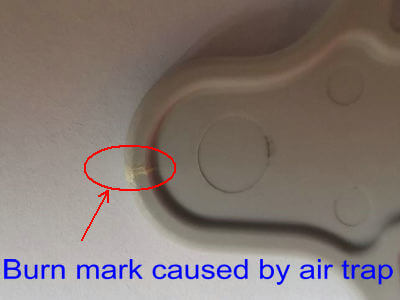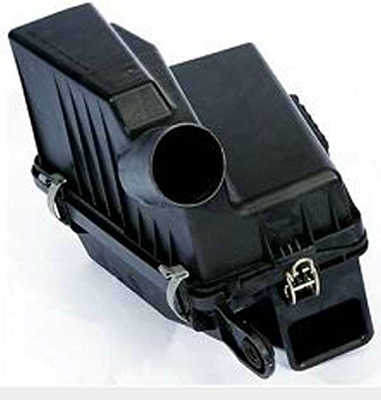Minimizing Ejector Pin Marks in Injection Molding: Strategies for High-Quality Production
In the world of injection molding, the quality and aesthetics of the final product are of paramount importance. One common challenge faced by manufacturers is the occurrence of ejector pin marks. These marks, left behind during the ejection process, can mar the appearance and compromise the functionality of molded parts. In this article, we will explore the significance of managing ejector pin marks in injection molding, understand their characteristics, and delve into preventive measures and mitigation techniques to ensure high-quality production.
Understanding Ejector Pin Marks
Ejector pins play a vital role in the injection molding process. These pins are responsible for pushing the molded part out of the mold cavity once it has solidified. However, the force exerted by ejector pins can leave undesirable marks on the surface of the part. Ejector pin marks typically appear as small depressions or indentations and can vary in severity depending on several factors, including the design of the mold, the material used, and the injection molding parameters.
The Impact of Ejector Pin Marks
The presence of ejector pin marks can have both cosmetic and functional implications. From a cosmetic perspective, these marks can compromise the visual appeal of the final product. In industries such as automotive, consumer electronics, and medical devices, where aesthetics are crucial, ejector pin marks can lead to customer dissatisfaction and even rejection of the parts. Functionally, severe ejector pin marks may interfere with the proper functioning of the product, affecting critical dimensions, assembly, or performance.
Preventive Measures
To minimize the occurrence of ejector pin marks, careful consideration must be given during the design stage. Strategic placement and configuration of ejector pins can help reduce their visibility on the finished part. Additionally, leveraging mold flow analysis software can optimize the pin layout and minimize potential marking areas. Material selection also plays a significant role, as certain materials are more prone to ejector pin marks than others. Collaborating with material suppliers and conducting thorough testing can aid in choosing materials with better ejector pin mark resistance. Furthermore, regular mold maintenance and inspection of ejector pins are essential to identify any wear or damage that could contribute to mark formation.
Mitigation Techniques
In cases where ejector pin marks are unavoidable, various techniques can be employed to mitigate their visibility. Surface finishing methods, such as polishing and buffing, can help smoothen the affected areas, minimizing the appearance of marks. Texture application can be used to create intentional patterns or textures that hide or camouflage the marks. Additionally, secondary operations like painting, coating, or plating can be employed to cover the marks, further enhancing the aesthetics of the molded parts. Heat treatment or stress relieving processes may also be utilized to mitigate the visibility of ejector pin marks, depending on the material and product requirements.
Quality Control and Inspection
Establishing clear standards and specifications for ejector pin marks is essential to maintain consistent quality. Inspections should be carried out using appropriate methods and equipment to evaluate the severity of the marks accurately. These findings should be documented and reported, allowing manufacturers to track trends and take corrective actions when necessary. By implementing robust quality control measures, manufacturers can ensure that ejector pin marks are kept within acceptable limits and meet customer expectations.
Case Studies and Best Practices
Real-world examples provide valuable insights into ejector pin mark challenges and effective solutions. Industry best practices include collaboration between designers, mold makers, material suppliers, and manufacturers to address ejector pin mark concerns early in the product development cycle. Additionally, continuous improvement efforts, such as gathering feedback from customers and conducting internal reviews, contribute to refining processes and achieving better outcomes in ejector pin mark management.
At Sincere Tech, a leading injection mold manufacturer in China, we recognize the significant role custom injection molding plays in achieving manufacturing excellence. With our extensive expertise in the field, we are proud to offer high-quality custom injection molding services that adhere to the most stringent industry standards.
Our team comprises skilled professionals who are dedicated to delivering exceptional results tailored to your specific needs. Equipped with state-of-the-art equipment and driven by a commitment to innovation, we ensure a seamless and efficient manufacturing process from start to finish.
Right from the initial design phase, we prioritize meticulous attention to detail to guarantee that every product meets your exact specifications. Our experienced engineers work closely with you, offering valuable insights and recommendations to optimize the design for injection molding. This collaborative approach leads to cost-effective solutions without compromising on quality.
We harness the unique properties of plastic materials to create products that boast not only a superior surface finish but also tight tolerances. This not only results in reduced waste rate costs but also contributes to improved energy efficiency and enhances the overall user experience.
No matter your industry or application, our custom injection molding capabilities cater to a wide range of needs. Whether you require consumer goods, automotive components, electrical enclosures, medical devices, or industrial parts, we have the expertise and resources to meet your requirements.
Partner with Sincere Tech China mold maker for your custom injection molding needs and experience the benefits of our exceptional manufacturing capabilities, attention to detail, and commitment to delivering top-quality products that exceed your expectations.
If you have a plastic mold project that is looking for mould suppliers to support you, contact us to get price now.
Conclusion
Minimizing ejector pin marks in injection molding is crucial for achieving high-quality production. By understanding the nature of ejector pin marks and their impact, manufacturers can implement preventive measures during the design phase, carefully select materials, and ensure proper mold maintenance. When ejector pin marks are unavoidable, employing effective mitigation techniques, such as surface finishing and secondary operations, can significantly improve the appearance of the final product.
Maintaining strict quality control and inspection processes enables manufacturers to identify and address ejector pin marks promptly. By establishing standards and specifications, conducting thorough inspections, and documenting findings, manufacturers can consistently produce parts that meet or exceed customer expectations.
Real-world case studies serve as valuable resources for learning from others’ experiences. By adopting industry best practices, including collaboration, continuous improvement, and proactive feedback collection, manufacturers can stay ahead in the management of ejector pin marks and enhance overall product quality.
In conclusion, managing ejector pin marks in injection molding is essential for producing high-quality parts. By implementing preventive measures, employing effective mitigation techniques, and maintaining rigorous quality control processes, manufacturers can minimize the occurrence of ejector pin marks and deliver visually appealing and functionally reliable products. With continuous improvement and adherence to industry best practices, manufacturers can achieve excellence in ejector pin mark management, ensuring customer satisfaction and success in the competitive marketplace.
